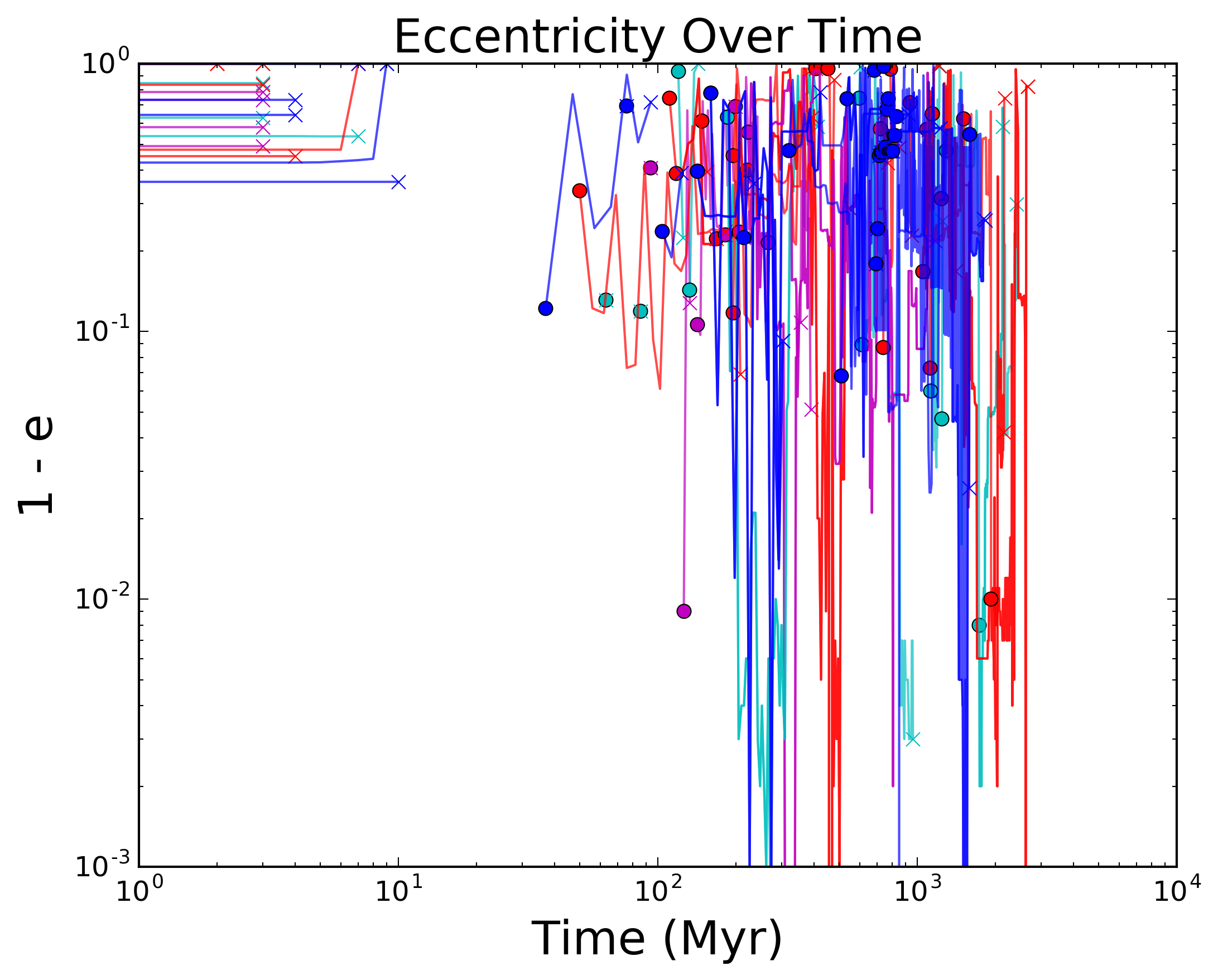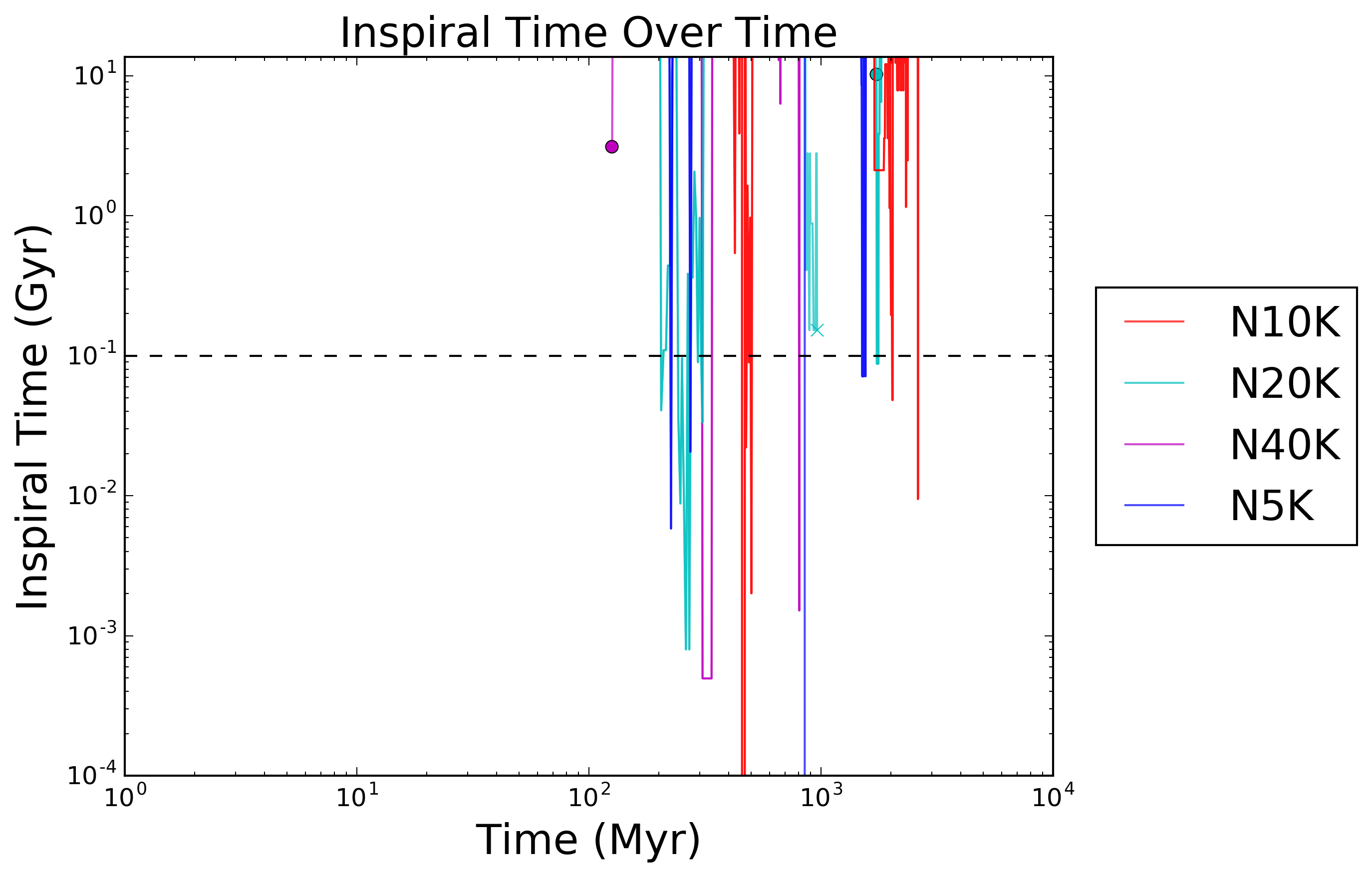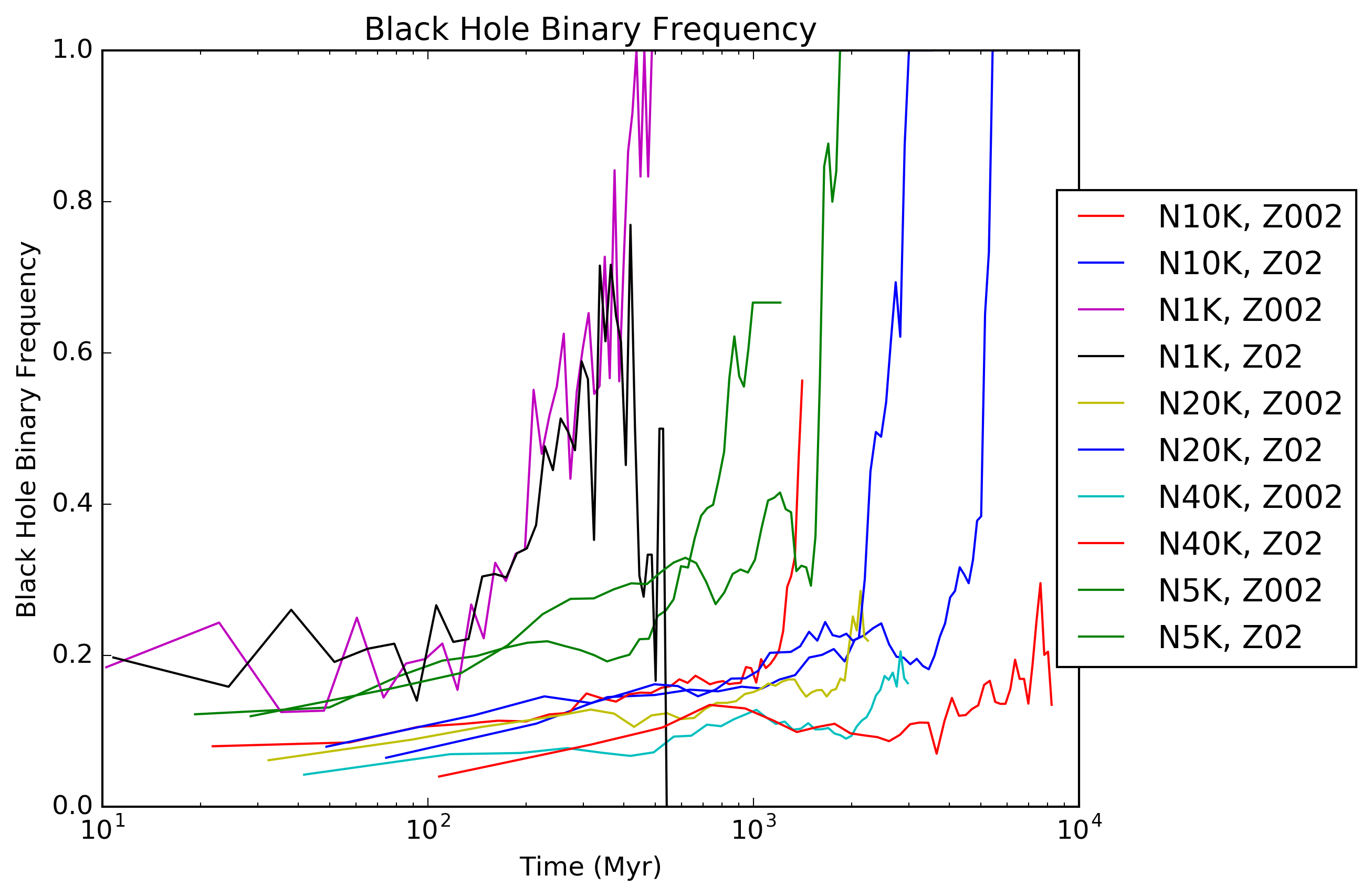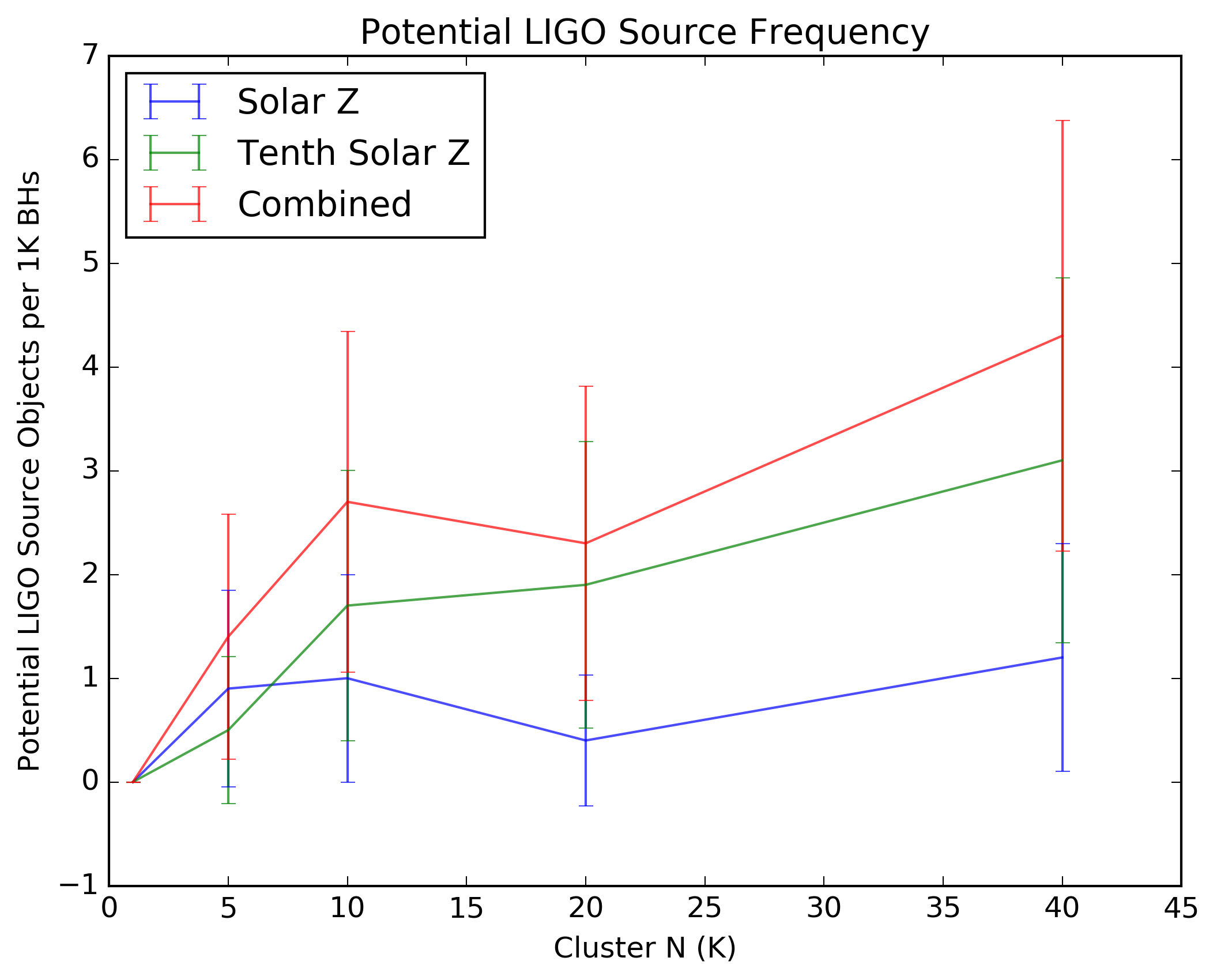Exploring Sources of Gravitational Waves from Star Cluster Dynamics
Joshua Fuhrman, Aaron Geller, Carl Rodriguez, Fred Rasio
.
| Abstract | The N-Body Problem | Star Cluster Evolution & BBH Formation | Results | Contact |
We limit our search for gravitational wave sources to those that would be theoretically detectable with current instruments. Objects of interest must be BBH systems, have merged within the cluster, or escaped the cluster with a sufficiently short inspiral time such that the system might merge within the current age of the universe (here we use a cutoff of 100 Myr). In order to calculate insprial times we use the equations for gravitational radiation published by Peters (1963).

|

|

|
Figures 1-3: These figures map the eccentricity, semi-major axis, and inspiral time of individual BBH systems of interest. Circles denote the formation of a BBH system, and Xs denote their termination. The dotted horizontal line shows our inspiral time cutoff.
The dynamic history of identified objects can be easily tracked throughout the simulation in the form of snapshots. Each snapshot contains relevant information of the object and any partners in a binary or higher order system. The simulation runs until the cluster dissolves, usually leaving behind only a BBH system, although we have found triple black hole systems to be common as well.

|

|
|
Figure 4: This figure shows the binary frequency of black holes over time, averaged for each set of initial conditions. As clusters evaporate, black holes clump in the center due to mass segregation, and the binary fraction rises on average. |
Figure 5: Potential LIGO Source Frequency plotted for each set of initial conditions. |
The two primary indicators of dynamic's influence are partner exchanges and large eccentricity or semi-major axes changes after BBH formation. Any partner change can only occur as part of a close dynamical encounter, usually between two binary systems, and is clearly an indicator of strong dynamics. After the black holes are formed any increase in the eccentricity of the system can only be explained by a strong dynamical encounter. BBH systems meeting one or more of these criteria are classified as dynamically formed, all others are classified as primordial.
. Joshua Fuhrman
. Northwestern REU Student 2016
. Carnegie Mellon University
. jfuhrman@andrew.cmu.edu